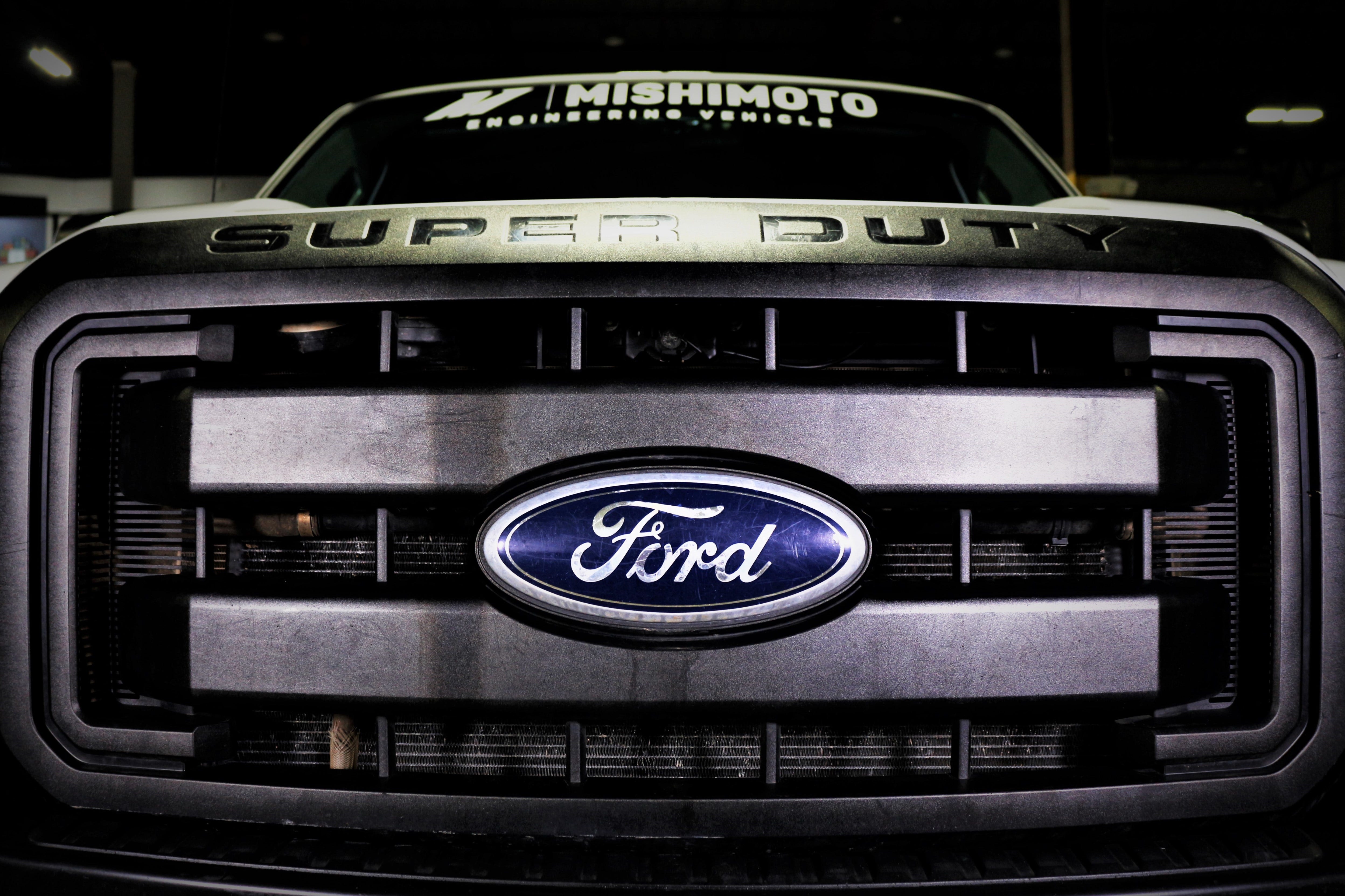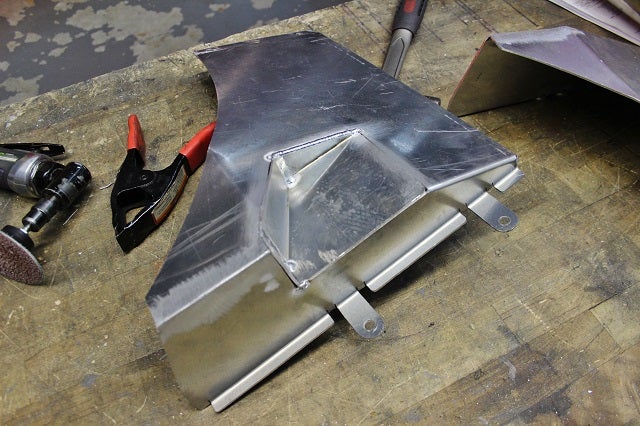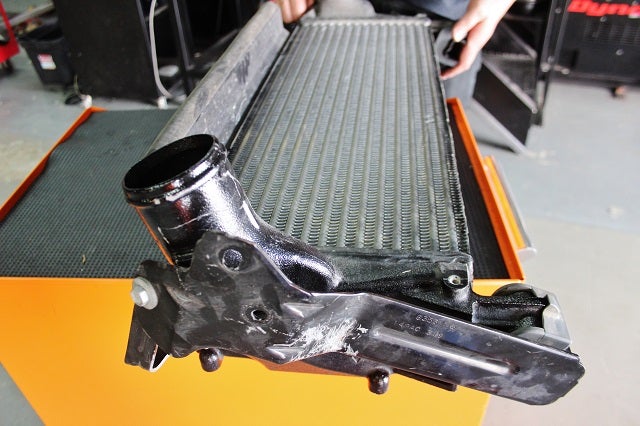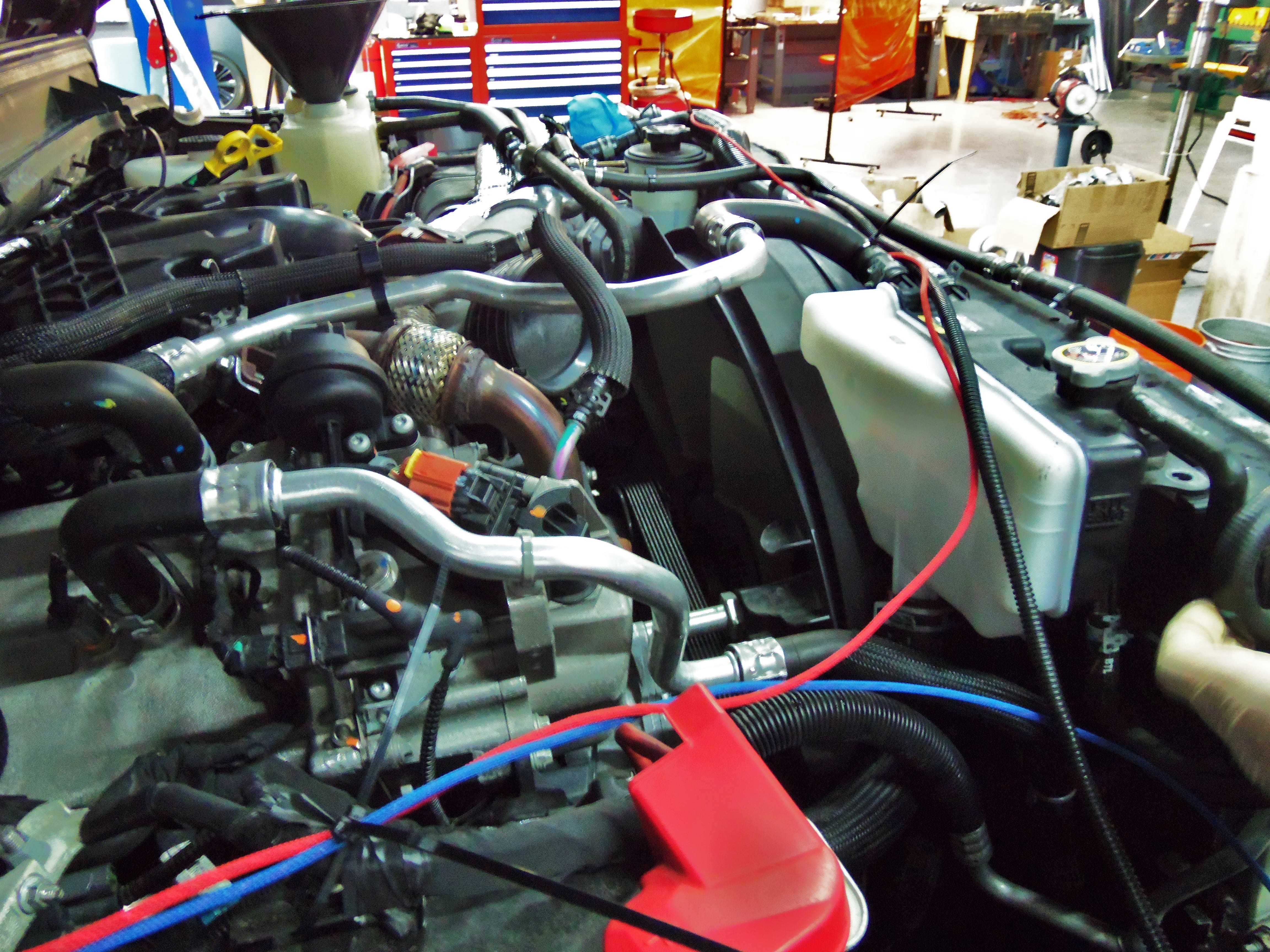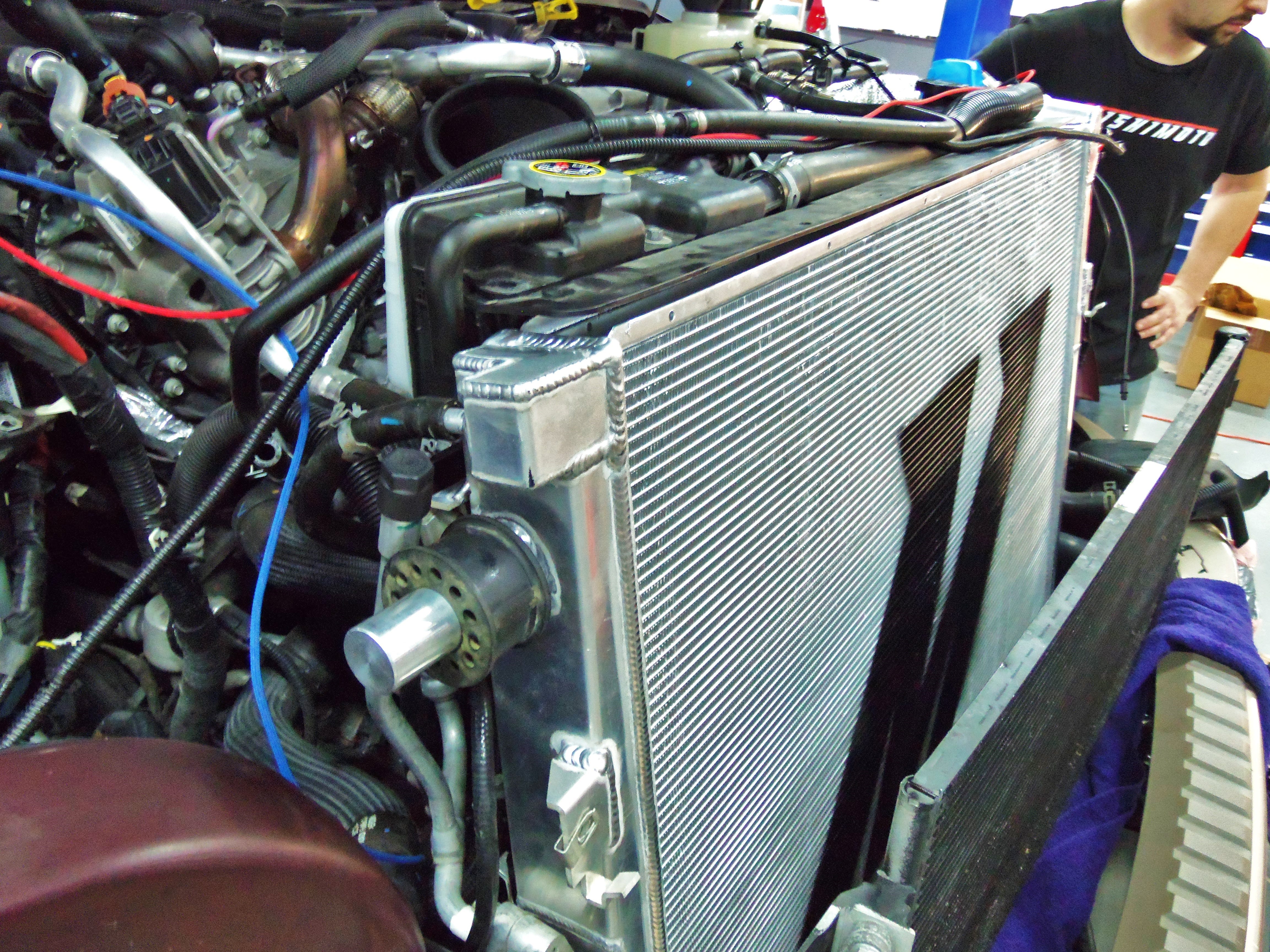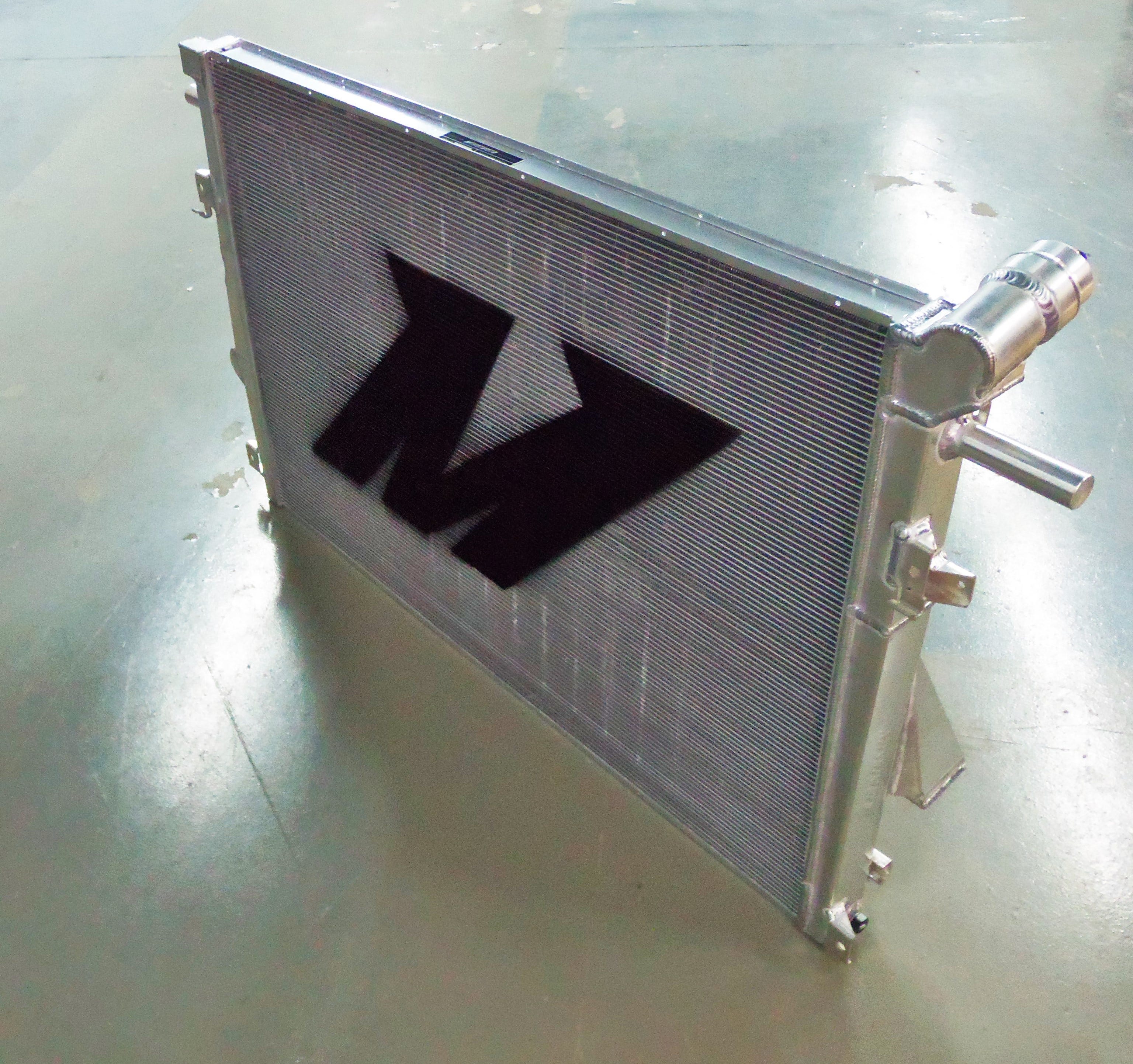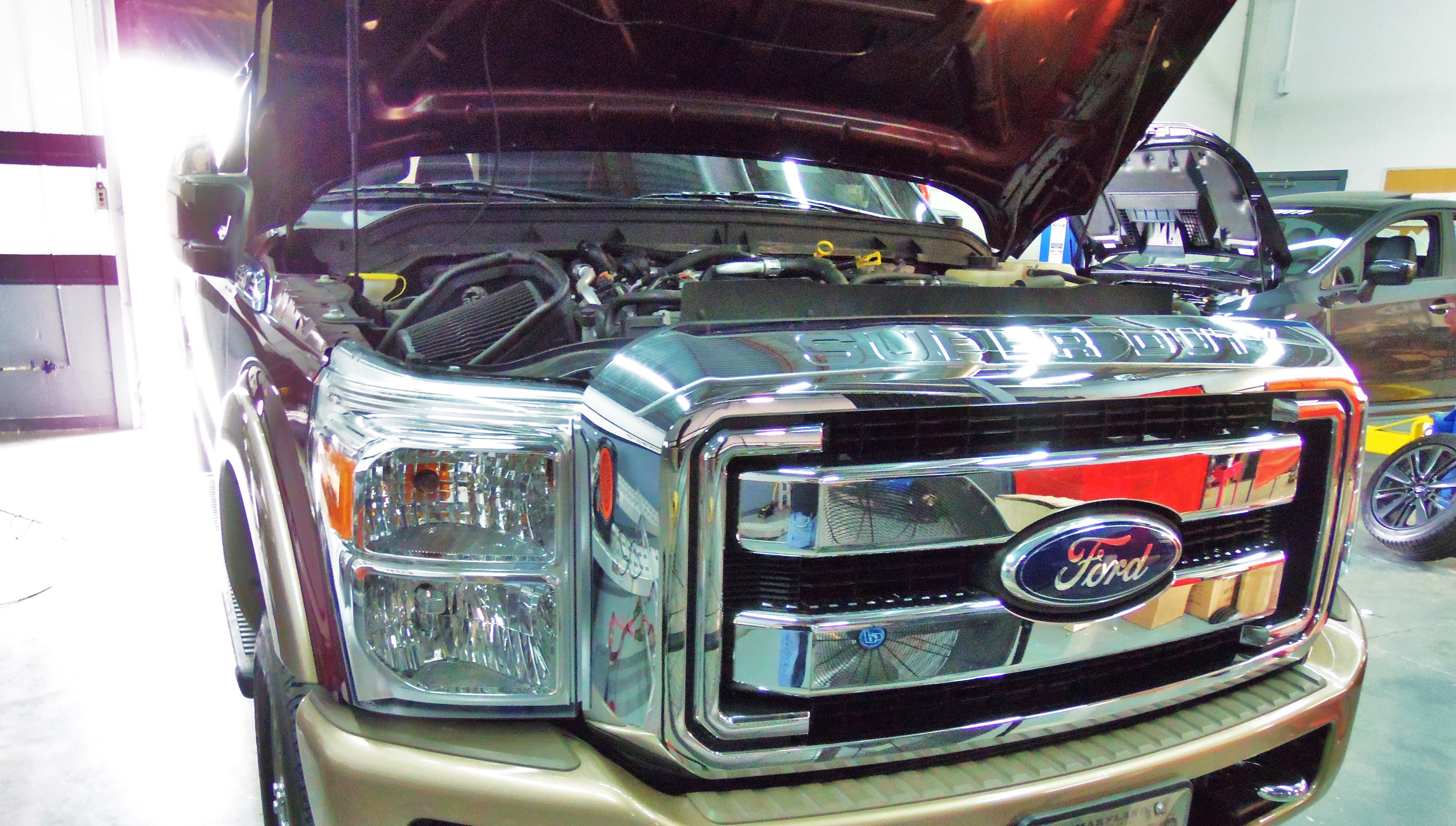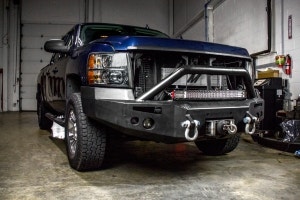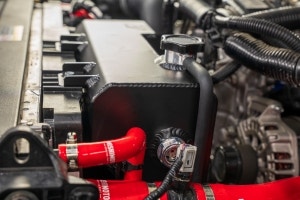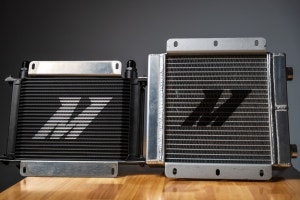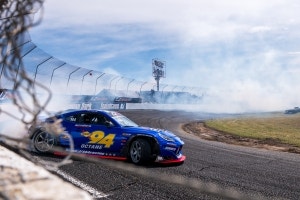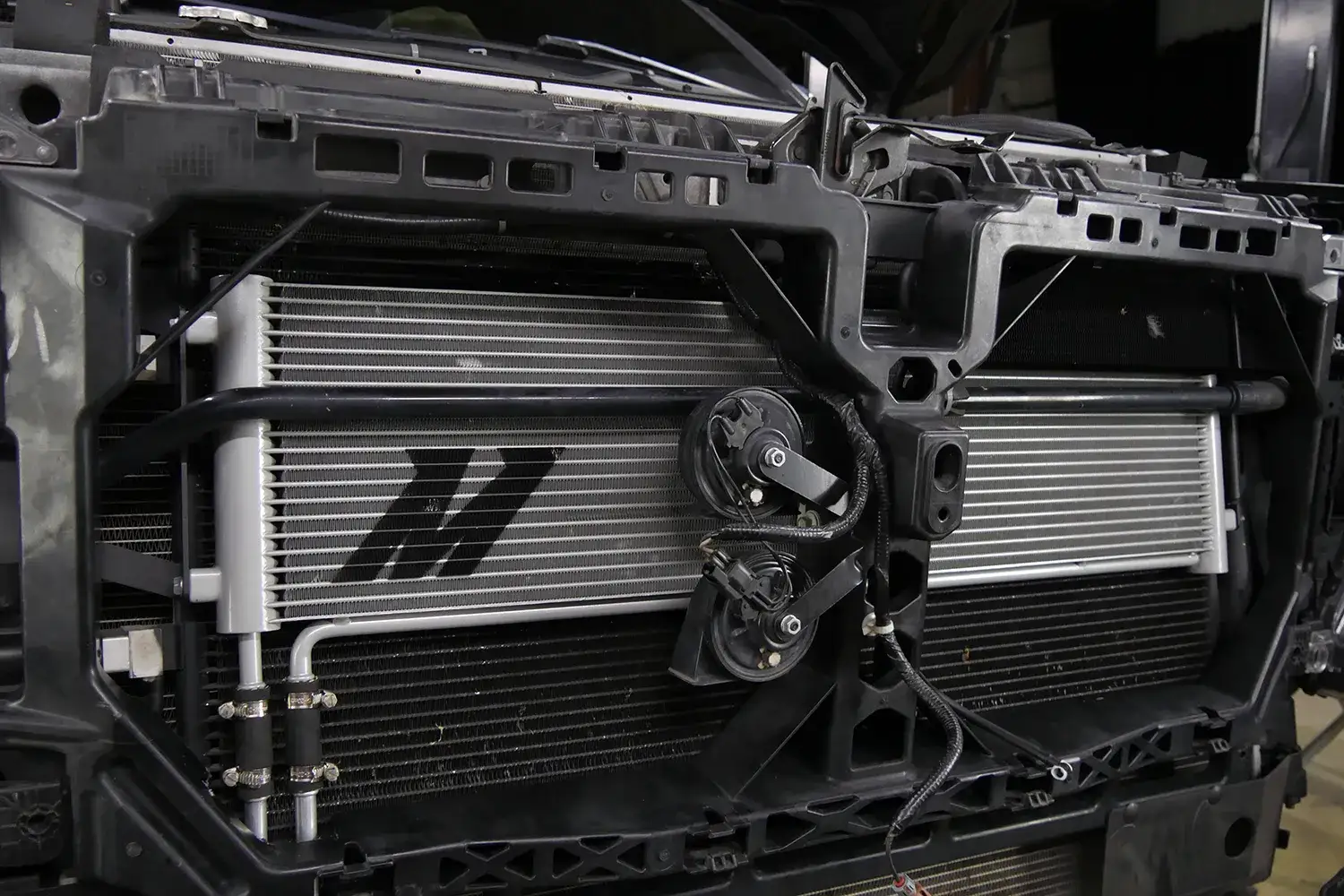Everything about Ford's Super Duty Powerstroke brand screams, well, Super Duty. It has done so since they were first put in the Econoline Vans in the mid "90's. Our 2011 is equipped with the 6.7L turbodiesel V8 engine, and it's clear Ford has engineers who really took the Super Duty term to heart. There are two batteries, two radiators, two thermostats, two coolant expansion tanks, an engine oil cooler, a transmission oil cooler, an EGR cooler - this truck even has a fuel cooler. Just looking at the engine bay of this monster can be a bit daunting, especially to a guy used to dealing with smaller, beat up, four-cylinder engines. Fortunately, our engineers are well-versed in the nuances of this truck, as we already have many items out on the market for this application including a full charge pipe
BLOG CATEGORIES
- The Ultimate Guide For Intercooler Selection
- Air-to-Water vs. Air-to-Air Intercooling
- The Top 3 Things to Look for When Choosing an Intercooler
- 12 Ways To Prepare Your Diesel For Winter
- Equipment Profiles
- Coolant Overflow Tanks vs. Expansion Tanks
- Coolant Basics
- What Is Blow By?
- Do Try This at Home – 10 Easy Updates You Can Do This Weekend
- Horsepower and You
- Air Filters: Dry vs Oiled
- Air Metering 101: Maf vs. Speed Density
- Turbocharging vs. Supercharging
- Blow Off Valves Explained
- Ford Bronco 2.7L Performance Intercooler, 2021+
- Ford Bronco 2.3 Performance Intercooler, 2021+
- Ford Bronco 2.3L/2.7L Stock Performance Stock Location Intercooler, 2021+
- Ford Bronco 2.3L Performance Intercooler Pipes, 2021+
- Ford Bronco 2.7L Performance Intercooler Pipes, 2021+
- Ford Bronco 2.3L/2.7L Borne Off-Road Snorkel, 2021+
- Ford Bronco 2.7L Performance Intake, 2021+
- Ford Bronco 2.3L Performance Intake, 2021+
- Ford Bronco 2.7L Baffled Oil Catch Can
- Ford Bronco 2.7L Baffled Oil Catch Can, PCV-Side, 2021+
- Ford Bronco 2.3L Baffled Oil Catch Can, 2021+
- BMW F8X M3/M3 Baffled Oil Catch Can Kit, CCV Side, 2015-2020
- BMW M2C/M3/M4 DCT Transmission Cooler, 2015-2020
- BMW F8X M3/M4 Direct Fit Oil Cooler, 2015-2020
- BMW F8X M2C/M3/M4 Performance Heat Exchanger, 2015-2020
- BMW F8X M2C/M3/M4 Charge Pipe Kit, 2015-2020
- BMW F8X M2C/M3/M4 Performance Air-to-Water Intercooler, 2015-2020
6.7l
-
Posted: April 18, 2017Categories: Ford 6.7L Powerstroke Intercooler 2011+Continue Reading »
-
Posted: May 16, 2016Categories: Dodge 6.7L Cummins Intercooler 2013+Continue Reading »
With our first prototype intercooler and shroud assembly complete, it was time to test fit and make necessary changes or adjustments.
Prototype Cummins Intercooler Test Fit
Using the factory mounting brackets, we bolted our components into place.

Mishimoto 6.7 Cummins intercooler prototype installedThe front shroud fits nice and snug against the front bumper and grille. The core is definitely in an ideal position for optimal airflow.

Mishimoto -
Posted: March 22, 2016Categories: Dodge 6.7L Cummins Intercooler 2013+Continue Reading »
Our product line for the Dodge Cummins continues to grow each year with the addition of interesting components that help you take your truck to the next level. These include efficient aluminum radiators, durable silicone hose kits, as well as top-notch intercoolers and intercooler piping kits. Our intercooler coverage ranges from 1994 through 2012, but in 2013, Dodge changed the Cummins intercooler design substantially. So once again, we are ready to take a shot at improving the factory system.
Factory Cummins Intercooler

Test vehicle for 6.7L Cummins intercooler developmentLike previous generations, the 2013+ models feature an air-to-air intercooler. The primary change
-
Posted: August 29, 2014Categories: Ford 6.7L Powerstroke Radiator 2011+Continue Reading »
Interested in purchasing our 6.7L Powerstroke radiator? Check out our product page for more information!
Mishimoto Ford 6.7L Powerstroke Aluminum Radiator
Time to put some numbers behind the effort our team has put forth on this project! As mentioned in the last post, we would be collecting real-world driving data to analyze the effectiveness of our performance aluminum radiator against the factory unit. To prepare for this, we attached our temperature sensors to both the inlet and outlet of the radiator. This would allow us to analyze the efficiency of the radiator by comparing the reduction in temperature from inlet to outlet. Check out these sensors attached to the factory radiator.

-
Posted: August 29, 2014Categories: Ford 6.7L Powerstroke Radiator 2011+Continue Reading »
Interested in purchasing our 6.7L Powerstroke radiator? Check out our product page for more information!
Mishimoto Ford 6.7L Powerstroke Aluminum Radiator
Now that the prototype was complete and all dimensions checked out with our drawings, it was time to drop this into a truck to ensure that fitment was spot on with all engine bay components. To give you an idea of the scale, take a look at this unit next to one of our Subaru WRX aluminum radiators.

Mishimoto 6.7L Size comparison of Powerstroke prototype radiator (left) and Subaru WRX -
Posted: August 28, 2014Categories: Ford 6.7L Powerstroke Radiator 2011+Continue Reading »
Interested in purchasing our 6.7L Powerstroke radiator? Check out our product page for more information!
Mishimoto Ford 6.7L Powerstroke Aluminum Radiator
Time to design a new radiator! Now that we had the factory radiator removed and the engine bay dimensions documented, we needed to determine the individual dimensions of the factory radiator. We set the radiator up on our Romer arm to begin drawing this component in 3D. Check it out!

6.7L Powerstroke factory radiator modeling
This tool allows our engineers to capture dimensions in a controlled environment. The radiator is secured
-
Posted: August 27, 2014Categories: Ford 6.7L Powerstroke Radiator 2011+Continue Reading »
Interested in purchasing our 6.7L Powerstroke radiator? Check out our product page for more information!
Mishimoto Ford 6.7L Powerstroke Aluminum Radiator
The Ford Powerstroke 6.4L has not had a fantastic reputation for radiator reliability. Radiator failures are nearly a guarantee, with many vehicle owners experiencing frequent failures in an extremely short time frame. Ford began tackling the problem with a variety of Technical Service Bulletins for coolant system upgrades to remedy the issues. To provide even more protection, the team at Mishimoto developed a very successful bolt-in radiator for the 6.4L that eliminates several common failure points in the factory unit: the plastic material used in the end tanks, and the crimp connection of the core to the tanks. We also investigated the reasoning for frequent failures in certain trucks, and we identified several factors that would
